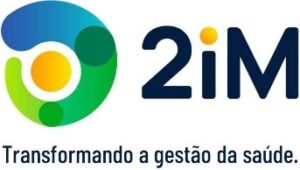Health Value Score implementation in Brazil
2im, a scale up of VBHC, developed a health data analysis platform that supports the construction of lines of care and published the “Health Value Score (EVS)”, a formula that evaluates the Quality Index (QI) – indicators of processes, outcome and patient experience – related to the Cost Index (CI) – cost indicators – with an MCDA method, applicable in various medical conditions. CASSEMS, a health operator with 200,000 lives, linked to UNIDAS (a Brazilian network that coordinates 4 million lives), was chosen to implement a line of care for rheumatoid arthritis, with funding from the pharmaceutical industry, aiming the adoption of VBHC for value-based payments and risk-sharing contracts.
In the pilot project, 112 patients were selected, totaling 133 consultations from January to October 2022. Based on clinical and therapeutic criteria, patients were divided into clusters, monitored in quarterly cycles by the therapeutic stages of the treat to target strategy. For process efficiency, alerts are triggered for the manager/patient when a care goal is not achieved. Completing the quality assessment, DAS-28 result was analyzed as an outcome, in addition to PREMs and PROMs as patient experience.
For each cycle, the EVS is calculated allocating 70% weight to QI and 30% to IC. Finally, the score is translated into a 0 to 5 scale. The main results observed were:
Process efficiency:
– 49 patients (44%) missed follow-up within 4 months.
– 29 patients (26%) did not have the DAS-28 registered in the last visit. From August on, after a feedback cycle, all consultations had the DAS-28 registered.
Outcomes:
– 46 patients (41%) had DAS-28 in remission, 16 (14%) in low disease activity, 17 (15%) in moderate disease activity, 4 (4%) in high disease activity and 29 (26%) not measured.
Patient experience:
– PROMs and PREMs were collected in 7 consultations, with an average performance of 64%.
Costs:
– The average cost per cycle with medication was $1.852,71.
– The average cost per cycle involving conventional DMARDs was $194,41. Values up to $288,46, or up to 3 DMARDs combined without leflunomide, received 100% score.
– The average cost per cycle involving immunobiologicals or biosimilars was $2.625,63. Values of up to $1.538,46 were established for 100% of the score, and from $1.538,46 to $2.307,69 for 50% of the score, as the two most used immunobiologicals are located in this value range.
EVS:
The mean EVS per therapeutic cycle was 2.31. Among the 2 most used immunobiologicals, responsible for 51% of the market share, we had the following results:
– The most used immunobiological (24 patients) had an average cost of $2.209,04 per cycle, with an EVS of 2.70 (57% QI and 48% CI).
– The second most used immunobiological (12 patients) had an average cost of $1.540,69 per cycle, with an EVS of 3.21 (54% QI and 88% CI).
The application of EVS in the evaluation of lines of care proved to be feasible to analyze real-life data, evaluating value in health and enabling the adoption of VBHC programs.

